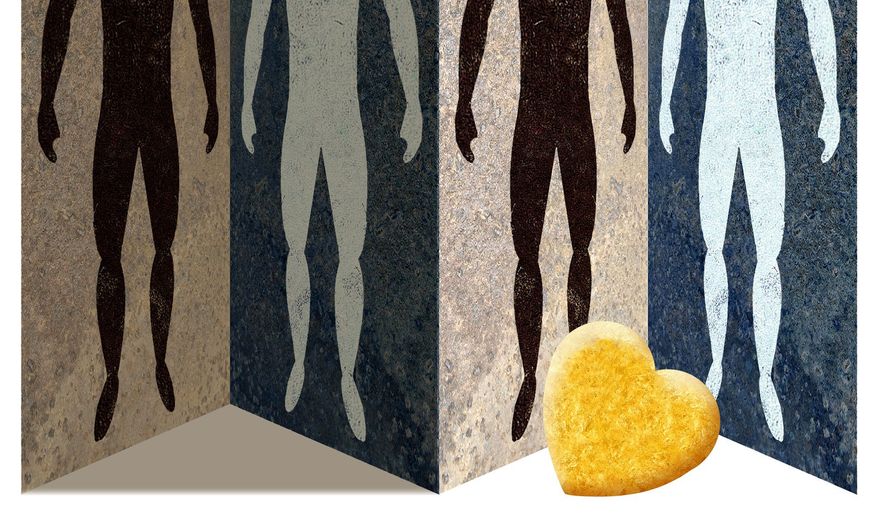OPINION:
The riots in Baltimore showed us again that we’re living in very challenging times, not only around the world but also in our own backyards. What we’re seeing is a generation of young people trapped by crime, poverty and drugs. There is no easy fix for this dire situation—but let’s imagine there is something we can do about it.
Let’s call it an invisible thread.
According to an ancient proverb, an invisible thread connects those who are destined to meet, regardless of place, time or circumstance. The thread may stretch or tangle. But it will never break.
I have learned we are all connected by invisible threads, and sometimes to the most unlikely people. I learned this back in1986, when I was a 35-year-old advertising sales executive in New York City and I met an 11-year-old homeless panhandler on the corner of 56th Street and Broadway.
Back then, just like today, it was easy for children and youth to fall through society’s cracks. And in New York City, just like most cities across America it was easy for those of us who were doing well to put our heads down and ignore those of us who weren’t. Homeless people were part of the city landscape, and I walked past panhandlers all the time.
But then one day I saw this 11-year-old boy, and as I passed he said, “Excuse me lady, do you have any spare change, I am hungry.” I lowered my head and said “no” and kept walking, until something made me stop. His words, “I am hungry”—hit me in the heart. So I went back and told the boy I would buy him lunch. And then for some strange reason I asked if I could join him. The boy, whose name was Maurice, was surprised by my offer. You see, most people treated him like he was invisible.
Maurice and I shared lunch that day, and I quickly learned how dire his life really was. His father was a gang member who left when Maurice was six, and his mother was hopelessly addicted to drugs. He lived in a single room, with as many as 11 relatives at the Bryant, a notoriously dangerous and drug-infested welfare hotel in Manhattan. I realized Maurice and I lived only two blocks apart, yet we came from vastly different worlds. Maurice always believed when he turned 13 he would join the family business—selling drugs. He also believed by the age of 18 he would either be in jail or dead. He had no role models, no plans for the future. He had no dreams of his own.
At the age of 11, Maurice believed he was doomed.
But, in fact, he wasn’t.
After our first lunch, Maurice and I wound up meeting every Monday night for dinner for the next four years, and many hundreds of times after that. In the time we spent together I tried to encourage him to imagine a different future for himself—to dream of a life of possibilities.
Today, Maurice is 41 years old. He is not in jail or on drugs or dead. He is a father and a husband, with a beautiful wife and seven lovely children. He works in construction and he is the first man in his family to ever earn a paycheck or a college credit. And now, all of his children have remarkable dreams of their own.
Against all odds, a generations-long cycle of destitution, drugs and violence has been broken. There was no easy fix for Maurice’s situation. But there was something that could be done.
At the same time, Maurice gave me one of the greatest gifts I’ve ever received. He taught me to be grateful for what I had. He showed me there are great hidden blessings in our lives, if only we open our minds and our hearts to the world around us.
He taught me how one small act of kindness can change a life.
Today, the impact of our meeting on a street corner in 1986 is resonating far beyond Maurice and me. In 2011, I wrote a book about our friendship called An Invisible Thread, and today that book is being taught in high schools and colleges around the country. The Board of Education in New York City, where Maurice and I still live, recently ordered 15,000 copies for high school seniors.
In my travels from school to school, I see how young people respond to our story—I see their excitement at understanding how kindness can change lives. It is not farfetched to believe that teaching kindness as part of the curriculum in high schools and colleges could even eliminate the entrenched problem of bullying. I not only believe it can, but I plan on spending the rest of my life working hard to get kindness inserted into school curriculums everywhere. We teach math, science, art and even fitness—why aren’t we teaching our kids to be kind?
Imagine, then, a society full of invisible threads connecting unlikely people—connecting people who can truly help each other. Then imagine each thread leads to an act of kindness, and that each act of kindness is like a tiny pebble tossed into a lake, and that each tiny splash ripples outward through years and even generations.
I did not donate thousands of dollars; I just bought a homeless boy lunch. And that one simple act changed both of our lives forever.
Laura Schroff is the author of the New York Times bestseller “An Invisible Thread” and soon to be released “An Invisible Thread Christmas Story” for children.




Please read our comment policy before commenting.